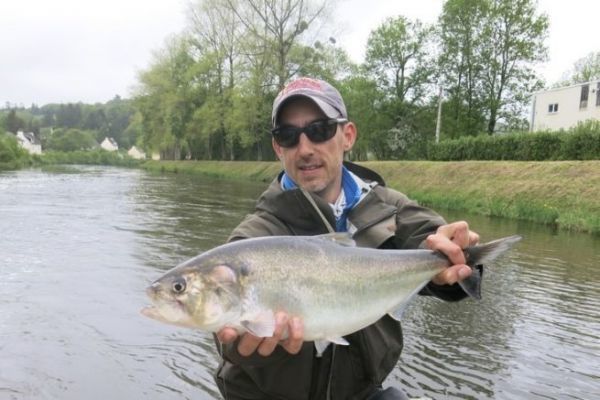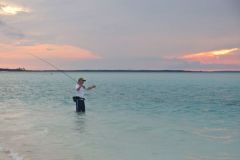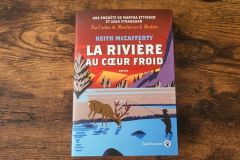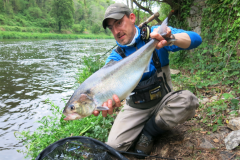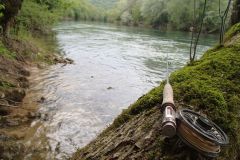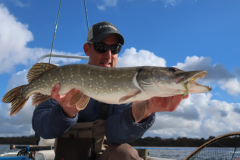Shad in France
In France, there are two species of shad. The greater shad (alosa alosa) and the lesser shad (alosa fallax), which migrate up many of France's rivers. A subspecies of the American shad, the Rhone shad (alosa fallax rhodanensis) is found on the Rhone and its tributaries, the Ardèche, Ouvèze, Eyrieux and Gard rivers, as well as the Durance.
Shad migrate up rivers until they find themselves blocked by a natural or man-made obstacle to their migration. These are often weirs, waterfalls, but generally dams. Even when equipped with a fish pass, shad find it hard to get past these obstacles, as they can't really jump. They need a very specific swimming pass to get through.
They are therefore fished downstream of these obstacles, where they stay and spawn between May and June.
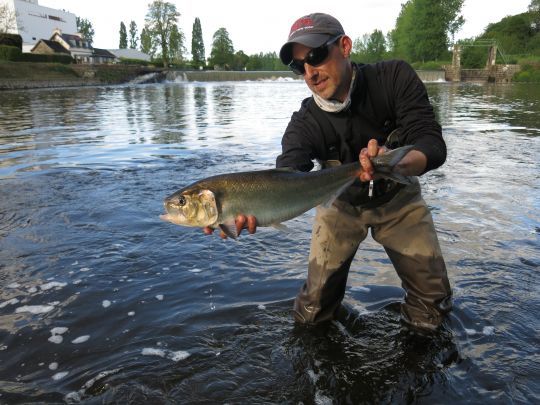
Where to fish for shad?
Shad are mainly sought after in Brittany, Normandy, Charente, south-western France, and in the south along the Rhône.
Fishermen eagerly await their arrival downstream of dams, where they concentrate. Generally, when they are present and active, they show their presence by coming to the surface to porpoise or "bull" (spawn on the surface). In some rivers, there may be several thousand individuals.
So concentrate your efforts on areas where you can see them moving, as this is where they will be active and biting. If you find schools of shad, try to get your flies through at the right speed and depth to hope to interest them.
How to catch your first shad?
Depending on the river and the species, shad are fished with sinking lines when our flies have to be brought down, but in certain corners and rivers, a floating line extended by tippets of different densities (polyleader) can be used. A 20° to 25° tip is sufficient to fight these powerful fish, which generally weigh between 1 and over 2.5 kg (large shad).
The important thing for shad is to get the flies to move at the right depth and speed. These are the two key factors. You need to make several drifts in the same veins, then go down the river metre by metre to find the zone where the fish are active, just like when fishing for salmon. Change the angle and speed of the drift with one or more mendings (moving the line upstream). If you're slow to get a bite, change your sink tip to go deeper.

Flies are often brightly colored to attract their attention. They seem to be very sensitive to UV colors. Orange, pink, yellow, chartreuse, mauve, violet and red are the most commonly used colors. If they're active and aggressive, it won't be long before they make their presence felt. They are often violent. You need to respond immediately with a strong strike, as shad take and spit very quickly. The hook must be pressed firmly into the cartilaginous mouth of this fascinating migrator. The fight is often violent and shad can make several rushes, but sometimes even candles! These are very combative fish that fight to the bitter end. Using a landing net helps to shorten the fight and return the fish to the water in good condition.
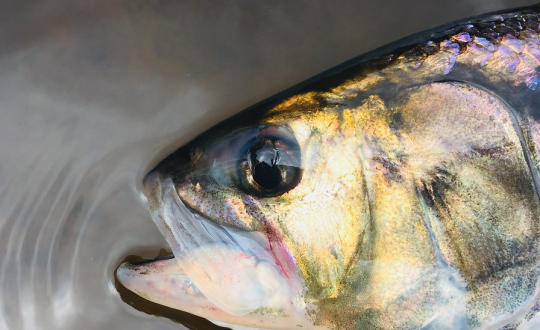
Try to keep your fish in the water as much as possible, and let it go without moving back and forth. They should leave on their own once they've re-oxygenated. These are fragile fish, so handle them with care and touch them as little as possible.
